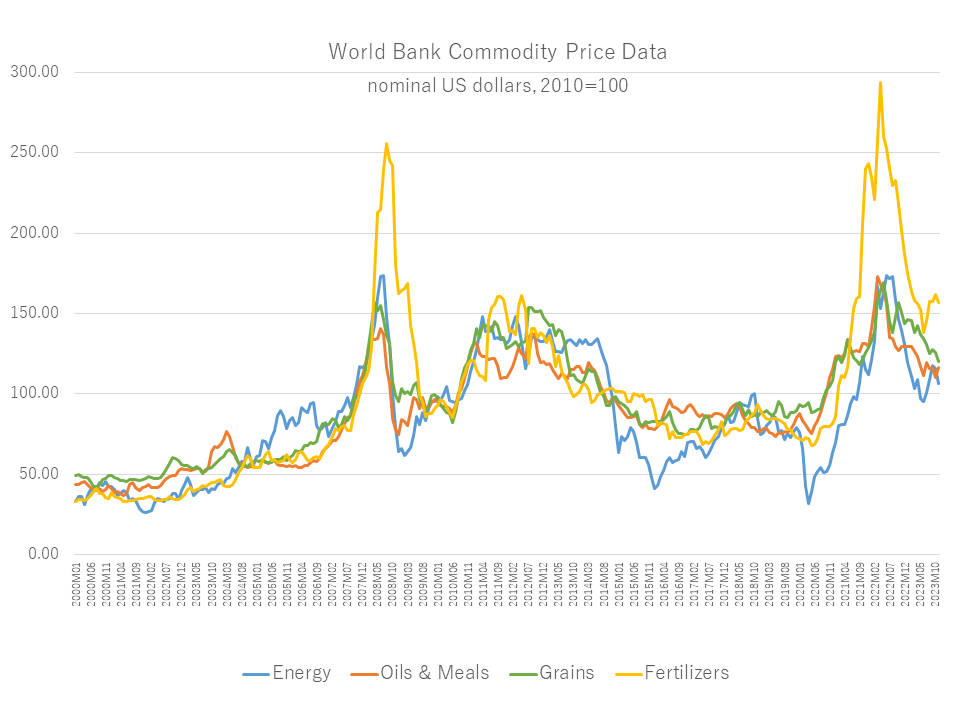Pick Up
925. Food Price Index for 2023

925. Food Price Index for 2023
In the first half of 2022, global food prices spiked to unprecedented levels due to fears of food supply chain disruptions following Russia's invasion of Ukraine in February. The crisis led to the signing of the Black Sea Grains Initiative in July 2022, facilitated by the United Nations and Turkey. This initiative, which was crucial in preventing a global food crisis, ensured the continued export of Ukrainian crops. However, its expiration in mid-July 2023 coincided with Russia's withdrawal from the agreement after three extensions.
Despite the earlier peaks, international food price indices have shown a downward trend in 2023 compared to the record highs of 2022. Recent data from the World Bank, updated on December 18, show a significant decline in corn and wheat prices, down 28% and 25%, respectively, from the previous year. In contrast, international rice prices, which were initially stable during the Russian-Ukrainian war, jumped 36% by the end of December 2023. This increase was attributed to concerns about Indian government export restrictions and adverse weather conditions affecting production conditions.
In late December, reports surfaced of ongoing attacks by Yemeni Houthi militants on ships in the Red Sea, a critical global shipping lane. The potential disruption of tanker traffic raised fears of higher oil prices. Approximately 10-15% of global trade, 8% of grain trade, and 12% of seaborne crude oil trade passes through the Red Sea, with Greece, China, Japan, and Germany collectively owning 40-50% of the ships involved. Anticipated increases in fossil fuel prices may lead to higher costs for chemical fertilizers, with indirect and direct impacts on the food supply chain. Monitoring these developments is critical to understanding potential future impacts on global food security.
Contributor: IIYAMA Miyuki (Information Program)
